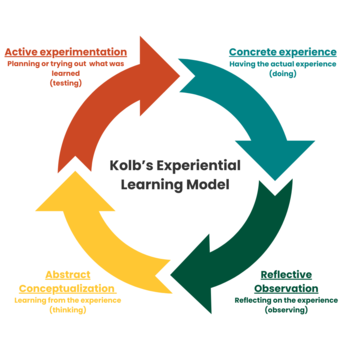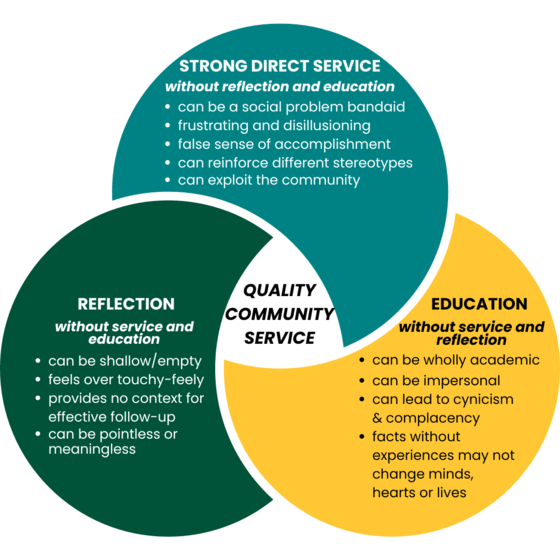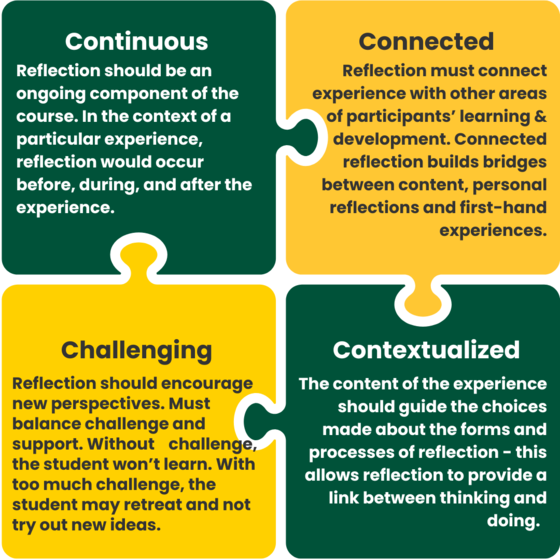Many scholars studying teaching and learning have demonstrated that reflection can have a powerful impact on students' learning and growth.
Some models that guide our understanding for reflection include: Kolb's Experiential Learning Model, University of Maryland's P.A.R.E model, Critical Reflection, and Break Away's Triangle of Quality Community Service.
Kolb's Model for Experiential Learning

Kolb's Experiential Learning Model is a key to understanding the importance of reflection for learning. This model is beneficial for helping students to understand that service should be part of their lives and not just a “one and done” activity. This can also be useful for helping participants tie their actions to course material.
PARE Model

The PARE Model proposes a structure for community engagement to best secure positive outcomes for the community partners and the student's experience and outcomes. Preparing for and reflecting upon service helps breakdown stereotypes and place the service experience within a broader context seen in the classroom.
Triangle of Quality Community Service

The Triangle of Quality Community Service shows that the most effective experiences within the community involve strong direct service, reflection and education. Experiences missing one or more aspect can be less impactful for the community, student learning and course outcomes.
Critical Reflection
John Dewey describes critical reflection as the "active, persistent and careful consideration of any belief or supposed form of knowledge in the light of the grounds that support it and the further conclusions to which is tends"
Reflection is essential for an effective community engagement experience, and critical reflection emphasizes that it is just as essential that reflection is done well. Additionally, the term critical connects reflection to critical thinking. Students should be able to engage in critical conversations and conversations that allows them to constructively criticize themselves, theories, society, etc.
This questioning and critiquing aids students in recognizing the complexity of social issues, which ultimately dispels a surface level view of the topic.
Eyler, Giles, and Schmiede (1996) emphasized that critical reflection should be continuous, connected, challenging and contextualized. With this model in mind, it's clear that reflection is a way to enhance learning if done right. It should not be a simple retelling of what happened, a purely emotional outlet to make oneself feel good, or a neat and tidy process done once.

